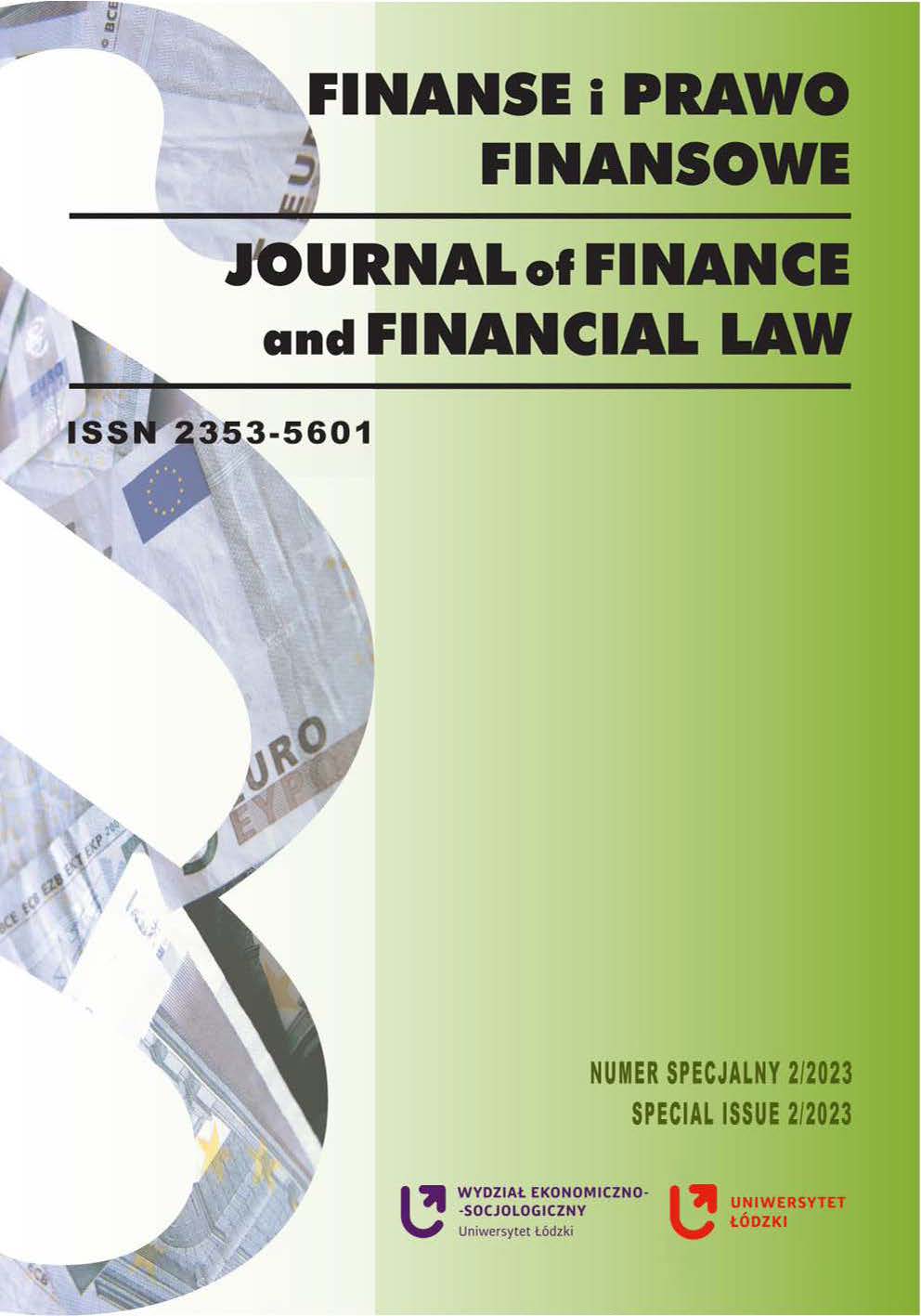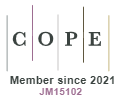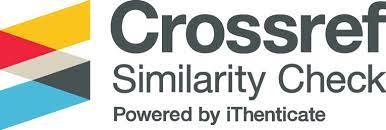Senior Non-preferred Bonds as an Instrument to Meet the MREL Requirement
DOI:
https://doi.org/10.18778/2391-6478.S2.2023.07Keywords:
resolution, MREL, senior non-preferred, SNP bonds, bank financingAbstract
The purpose of the article is to present the results of the first assessment of the senior non-preferred (SNP) bond market’s development in Poland. SNP bonds were introduced to facilitate meeting the banks’ MREL, which aims to build banks’ loss absorption and recapitalization capacity. At the same time, they are the next source of bank funding. The development of the SNP bond market has been initiated relatively recently with the full establishment of resolution systems and the introduction of the MREL requirement for banks. Although the first non-binding decisions to impose the MREL requirement were issued in 2016, the concept of SNP was formally introduced in 2017. In 2019, an amendment to the rules for determining the MREL requirement was adopted, which was implemented into the Polish legal framework in 2021, and in 2022, an amendment to the regulations on bonds was introduced, enabling the issuance of SNP bonds counted to MREL. Since then (2022), there has been a full legal framework for setting and maintaining the MREL requirement, and therefore full conditions for the development of this market in Poland. Therefore, it is justified to say that this market is relatively young. Moreover, it is under-investigated by scientists. This justifies the assessment of the potential scale of this market, its ability to achieve the goal for which it was created, as well as the premises and barriers to its development.
Methodology. The research methods were quantitative analysis (calculation of the potential shortage of the MREL requirement and needs in the field of securities issuance based on reporting data) and qualitative analysis (in terms of assessing the challenges).
Results of the research. The main determinant of its potential is the amount of MREL shortfall, which depends on the financial situation of banks and partly on the strategy of resolution authorities (responsible for setting the level of this requirement). The main challenges for the Polish SNP bond market are related to the prospects for further development of the banking sector and its environment (business and strategic). Nevertheless, it seems that the potential of the SNP bond market in Poland is underrated. The article contributes to general knowledge about bank funding sources.
Downloads
References
Alior Bank SA (2022). Prospekt bazowy programu ofertowego obligacji do kwoty 2.000.000.000 PLN [Base prospectus of the bond offering program up to PLN 2,000,000,000], https://www.aliorbank.pl/dodatkowe-informacje/relacje-inwestorskie/wieloletni-program-emisji-obligacji/program-ofertowy-do-2000000000-zl/dokumenty-programu-ofertowego.html (accessed 16.08.2023).
Google Scholar
Alior Bank SA (2023). Ostateczne warunki [Final terms], https://www.aliorbank.pl/dodatkowe-informacje/relacje-inwestorskie/wieloletni-program-emisji-obligacji/program-ofertowy-do-2000000000-zl/dokumenty-programu-ofertowego.html (accessed 16.08.2023).
Google Scholar
Arnould, G., Avignone, G., Pancaro, C. and Zochowski, D. (2021). Bank funding costs and solvency. European Journal of Finance, no. 28(10), pp. 931–963, https://doi.org/10.1080/1351847X.2021.1939753
Google Scholar
DOI: https://doi.org/10.1080/1351847X.2021.1939753
Bank Handlowy (2022). Raport bieżący nr 35/2022 [Current Report No. 35/2022], https://www.citibank.pl/poland/files/raport-biezacy-nr35-2022.pdf (accessed 09.08.2023).
Google Scholar
Bank Handlowy (2023). Informacje w zakresie adekwatności kapitałowej Grupy Kapitałowej Banku Handlowego w Warszawie według stanu na 31 grudnia 2022 roku [Information on the capital adequacy of the Capital Group of Bank Handlowy w Warszawie as of 31 December 2022], https://www.citibank.pl/poland/files/adekwatnosc_kapitalowa_2022_12_31.pdf (accessed 14.08.2023).
Google Scholar
Bank Millennium (2023a). Raport bieżący nr 19/2023 [Report current issue no. 19/2023], https://www.bankmillennium.pl/o-banku/relacje-inwestorskie/raporty-biezace/-/r/30314009 (accessed 09.08.2023).
Google Scholar
Bank Millennium (2023b). Raport w zakresie adekwatności kapitałowej, ryzyka oraz polityki wynagrodzeń Grupy Kapitałowej Banku Millennium SA za 2022 rok [Report on capital adequacy, risk and remuneration policy of the Bank Millennium SA Capital Group for 2022], https://www.bankmillennium.pl/documents/10184/31801731/Raport_kapita%C5%82_ryzyko_wynagrodzenia-Gru-2022-sig-sig-sig-sig-sig-sig-sig.pdf (accessed 14.08.2023).
Google Scholar
Bank.pl (2023). Nowe przepisy CRR/CRD uwzględnią postulaty ZBP [New CRR/CRD regulations will take into account ZBP’s demands], https://bank.pl/nowe-przepisy-crr-crd-uwzglednia-postulaty-zbp/?id=454572&catid=25925 (accessed 10.08.2023).
Google Scholar
Barattieri, A., Moretti, L. and Quadrini, V. (2021). Bank funding, leverage, and investment. Journal of Financial Economics, no. 141(1), pp. 148–171, https://doi.org/10.1016/j.jfineco.2020.06.022
Google Scholar
DOI: https://doi.org/10.1016/j.jfineco.2020.06.022
BFG (2021). Metodyka MREL [MREL methodology], https://www.bfg.pl/wp-content/uploads/metodyka-mrel.pdf (accessed 25.01.2024).
Google Scholar
BCBS (2010). An assessment of the long-term economic capital and liquidity requirements, BIS.
Google Scholar
BNP Paribas (2023a). Raport bieżący nr 27/2023 [Current Report No. 27/2023].
Google Scholar
BNP Paribas (2023b). Informacje dotyczące adekwatności kapitałowej grupy kapitałowej BNP Paribas Bank Polska SA według stanu na dzień 31 grudnia 2022 roku [Information on the capital adequacy of the BNP Paribas Bank Polska SA capital group as of December 31, 2022], www.bnpparibas.pl (accessed 14.08.2023).
Google Scholar
BPS SA (2023). Informacja dotycząca adekwatności kapitałowej Grupy Kapitałowej Banku BPS SA podlegająca ujawnieniom na dzień 31.12.2022 r. [Information on the capital adequacy of the Bank BPS SA Capital Group to be disclosed as of December 31, 2022], https://www.bankbps.pl/images/Dokumenty/adekwatnosc_kapitalowa/Informacja_dot._adekwatno%C5%9Bci_na_31.12.2022_r_do_podpisu_na_stron%C4%99_internetow%C4%85-sig-sig-sig.pdf (accessed 14.08.2023).
Google Scholar
Calomiris, Ch. (1999). Building an incentive-compatible safety net. Journal of Banking and Finance, no. 23, pp. 1499–1519.
Google Scholar
DOI: https://doi.org/10.1016/S0378-4266(99)00028-X
Czechowska, D., Lipiński, Cz., Borys, M., Stawska, J., Stępińska, J. i Zatoń, W. (2023). Wymóg MREL w realiach systemu bankowego w Polsce. PAB/WIB grudzień.
Google Scholar
Song, F. and Thakor, A. (2007). Relationship banking, fragility, and the asset-liability matching problem. The Review of Financial Studies, no. 20, pp. 2129–2177.
Google Scholar
DOI: https://doi.org/10.1093/rfs/hhm015
Huang, R. and Ratnovski, L. (2010). The dark side of bank wholesale funding. IMF Working Paper, WP/10/170.
Google Scholar
DOI: https://doi.org/10.5089/9781455201815.001
Demirguc-Kunt, A. and Huizinga, H. (2009). Bank Activity and Funding Strategies. The Impact on Risk and Returns, Policy Research Working Paper 4837.
Google Scholar
DOI: https://doi.org/10.1596/1813-9450-4837
Diamond, D. (1984). Financial Intermediation and Delegated Monitoring. The Review of Economic Studies, vol. 51, no. 3, pp. 393–414, https://doi.org/10.2307/2297430
Google Scholar
DOI: https://doi.org/10.2307/2297430
Crespi, F. and Mascia, D. (2018). The Funding Strategies of European Banks: A Discussion, Palgrave Macmillan Studies in Banking and Financial Institutions. In: Bank Funding Strategies, Palgrave Macmillan.
Google Scholar
DOI: https://doi.org/10.1007/978-3-319-69413-9_1
EBA (2023a). EBA MREL Quantitative monitoring report and impact assessment, EBA/REP/2023/03.
Google Scholar
EBA (2023b). MREL Dashboard. Data as of Q4 2022, https://www.eba.europa.eu/sites/default/documents/files/document_library/Risk%20Analysis%20and%20Data/Risk%20dashboard/Q2%202023/1058317/MREL%20Dashboard%20-%20Q4%202022.pdf (accessed 14.08.2023).
Google Scholar
EBC (2023). Quantitative tightening: rationale and market impact, https://www.ecb.europa.eu/press/key/date/2023/html/ecb.sp230302~41273ad467.en.html (accessed 28.08.2023).
Google Scholar
Evanoff, D., Jagtiani, J. and Nakata, T. (2011). Enhancing market discipline in banking: The role of subordinated debt in financial regulatory reform. Journal of Economics and Business, vol. 63(1), pp. 1–22, https://doi.org/10.1016/j.jeconbus.2010.07.001
Google Scholar
DOI: https://doi.org/10.1016/j.jeconbus.2010.07.001
Gospodarowicz, A. i Nosowski, A. (2016). Zarządzanie instytucjami kredytowymi [Managing credit institutions]. Warszawa: Wydawnictwo C.H.Beck.
Google Scholar
Gospodarowicz, M. (2015). System gwarantowania depozytów z uwzględnieniem ryzyka banku i ryzyka systemowego [Deposit guarantee system, taking into account bank risk and systemic risk]. Warszawa: Oficyna Wydawnicza SGH.
Google Scholar
Hull, J. (2021). Zarządzanie ryzykiem instytucji finansowych [Risk management and financial institutions], Warszawa: Wydawnictwo Naukowe PWN.
Google Scholar
ING Bank Śląski (2022). Raport nr 27/2022 [Report No. 27/2022], https://www.ing.pl/_fileserver/item/unysrcv (accessed 28.08.2023)
Google Scholar
ING Bank Śląski (2023a). Raport nr 12/2023 [Report No. 12/2022], https://www.ing.pl/_fileserver/item/funvuo9 (accessed 09.08.2023).
Google Scholar
ING Bank Śląski (2023b). Informacje o charakterze jakościowym i ilościowym dotyczące adekwatności kapitałowej oraz zmiennych składników wynagrodzenia za rok 2022 [Qualitative and quantitative information on capital adequacy and variable remuneration components for 2022], https://www.ing.pl/_fileserver/item/dzecbuq (accessed 14.08.2023).
Google Scholar
KNF (2023). Długoterminowe finansowanie kredytów hipotecznych [Long-term financing of mortgage loans], https://www.knf.gov.pl/knf/pl/komponenty/img/Koncepcja_finansowania_hipotek_82201.pdf (accessed 14.08.2023).
Google Scholar
Koleśnik, J. (2019). Bankowe ryzyko systemowe. Źródła i instrumenty redukcji [Banking systemic risk. Sources and instruments of reduction], Warszawa: Difin.
Google Scholar
Kozińska, M. (2018a). MREL a polski sektor bankowy [MREL and Polish banking sector]. Prace Naukowe Uniwersytetu Ekonomicznego we Wrocławiu, nr 531, s. 253–265, https://doi.org/10.15611/pn.2018.531.23
Google Scholar
DOI: https://doi.org/10.15611/pn.2018.531.23
Kozińska, M. (2018b). Structure of the Passive Side of a Bank’s Balance Sheet Versus the Pari Passu and No-Creditor-Worse-Off Rules. Financial Sciences. Nauki o Finansach, vol. 23, is-sue 3, pp. 84–101, https://doi.org/10.15611/fins.2018.3.07
Google Scholar
DOI: https://doi.org/10.15611/fins.2018.3.07
Kozińska, M. i Wilk, B. (2022). Charakter prawny sankcji ze strony Bankowego Funduszu Gwarancyjnego za niespełnienie wymogu MREL oraz ich ekonomiczna skuteczność [MREL requirement – legal nature of sanctions imposed by the Bank Guarantee Fund for failure to meet the requirement and their economic affectiveness]. Bezpieczny Bank, nr 4(89), s. 29–52, https://doi.org/10.26354/bb.2.4.89.2022
Google Scholar
Korzeb, Z. (2013). Koncepcja RAPM (Risk Adjusted Performance Measure) jako zintegrowany model zarządzania ryzykiem i efektywnością w banku komercyjnym [The concept of RAPM (Risk Adjusted Performance Measure) as an integrated risk and performance management model in a commercial bank]. Prace Naukowe Uniwersytetu Ekonomicznego we Wrocławiu, vol. 289, s. 294–303.
Google Scholar
Le Lesle, V. (2012). Bank debt in Europe: “Are funding models broken”. IMF Working Paper No. 12/299.
Google Scholar
DOI: https://doi.org/10.5089/9781475522037.001
Martino, E. and Parchimowicz, K. (2021). Go Preventive or Go Home – The Double Nature of MREL. European Company and Financial Law Review, no. 18(4), pp. 608–639, https://doi.org/10.1515/ecfr-2021-0023
Google Scholar
DOI: https://doi.org/10.1515/ecfr-2021-0023
mBank (2021). Final terms, https://www.mbank.pl/pdf/msp-korporacje/relacje-inwestorskie/ratingi-instrumenty-dluzne/mbank_snp-green-issuance_final-terms_signed.pdf (accessed 16.08.2023).
Google Scholar
mBank (2023a). Raport 23/2023 [Report No. 23/2023], https://www.mbank.pl/relacje-inwestorskie/komunikaty-gieldowe/komunikat.html?i=5759#hyxq68qa41 (accessed 09.08.2023).
Google Scholar
mBank (2023b). Ujawnienia dotyczące adekwatności kapitałowej Grupy mBank SA na dzień 31 grudnia 2022 roku [Disclosures regarding the capital adequacy of mBank SA Group as of 31 December 2022], https://www.mbank.pl/pdf/relacje-inwestorskie/rn/2022/ujawnienia-pl.pdf (accessed 14.08.2023).
Google Scholar
Modigliani, F. and Miller, M. (1958). The Cost of Capital, Corporation Finance, and the Theory of Investment. American Economic Review, vol. 48, no. 3, pp. 261–297.
Google Scholar
Modras, A. (2023). Zarządzanie ryzykiem prawnym w bankowości [Legal risk management in banking]. Warszawa: PWE.
Google Scholar
Niedziółka, P. (2019). Pojęcie i rodzaje ryzyka bankowego [The concept and types of banking risk]. In: M. Zaleska, red., Świat bankowości [World of banking]. Warszawa: Difin.
Google Scholar
NBP (2021). Raport Roczny 2020. Płynność sektora bankowego. Instrumenty polityki pieniężnej NBP [Annual Report 2020. Liquidity of the banking sector. NBP monetary policy instruments], https://nbp.pl/wp-content/uploads/2022/07/raport2020.pdf (accessed 14.08.2023).
Google Scholar
Oziębała, W. (2020). Współczesne tendencje kształtowania się modelu nadzoru bankowego. Nadzór makro i mikroostrożnościowy [Contemporary trends in shaping the model of banking supervision. Macro and micro-prudential supervision]. Warszawa: Wydawnictwo C.H.Beck.
Google Scholar
Pekao SA (2022). Raport 27/2022 [Report 27/2022], https://www.pekao.com.pl/relacje-inwestorskie/raporty-i-sprawozdania/raporty/4e9b9731-92bb-445b-8de3-20732bdce5b3/raport-27-2022.html (accessed 09.08.2023).
Google Scholar
Pekao SA (2023a). Informacje w zakresie adekwatności kapitałowej Grupy Kapitałowej Banku Pekao SA według stanu na 31 grudnia 2022 roku [Information on the capital adequacy of the Bank Pekao SA Capital Group as of December 31, 2022], https://www.pekao.com.pl/dam/jcr:f9398ca2-0510-43d9-b39d-72df8d143c51/Filar%203_Grupa%20Banku%20Pekao%2031.12.2022.pdf (accessed 14.08.2023).
Google Scholar
Pekao SA (2023b). Raport 7/2023 [Report 7/2023], https://www.pekao.com.pl/relacje-inwestorskie/raporty-i-sprawozdania/raporty/dabc86a6-252e-49ad-8220-b67d5f68bcac/raport-7-2023.html (accessed 16.08.2023).
Google Scholar
Pekao SA (2023c). Raport 19/2023 [Report 19/2023], https://www.pekao.com.pl/relacje-inwestorskie/raporty-i-sprawozdania/raporty/f2414722-19aa-45be-86ac-bfb3861fbb80/raport-19-2023.html#:~:text=%C5%81%C4%85czna%20warto%C5%9B%C4%87%20nominalna%20emitowanych%20obligacji%3A%20750.000.000%20PLN%20(s%C5%82ownie,Format%20emisji%3A%202NC1%2C%20tj (accessed 16.08.2023).
Google Scholar
PKO BP (2022). Raport nr 35/2022 [Report No. 35/2022], https://www.pkobp.pl/relacje-inwestorskie/raporty-biezace/raport-nr-35-2022-pismo-bankowego-funduszu-gwarancyjnego-w-sprawie-ustalenia-minimalnego-wymogu-dotyczacego-funduszy-wlasnych-i-zobowiazan-kwalifikowanych-mrel-dla-pko-banku-polskiego-s-a/ (accessed 09.08.2023).
Google Scholar
PKO BP (2023). Adekwatność kapitałowa oraz inne informacje Grupy Kapitałowej Powszechnej Kasy Oszczędności Banku Polskiego Spółki Akcyjnej podlegające ogłaszaniu według stanu na 31 grudnia 2022 roku [Capital adequacy and other information of the Powszechna Kasa Oszczędności Bank Polski Spółka Akcyjna Group to be published as of 31 December 2022], https://www.pkobp.pl/media_files/dff25ed6-2e1e-4e5c-ac03-960dff262998.pdf (accessed 14.08.2023).
Google Scholar
Proniewski, M. i Tarasiuk, W. (2012). Zarządzanie instytucjami kredytowymi. Strategie, modele biznesowe i operacyjne [Management of credit institutions. Strategies, Business and Operational Models]. Warszawa: Wydawnictwo C.H.Beck.
Google Scholar
Santander Bank Polska (2023a). Raport bieżący nr 23/2023 [Current Report No. 23/2023], https://www.santander.pl/relacje-inwestorskie/raporty/raporty-lista/raport-biezacy-nr-23-2023 (accessed 09.08.2023).
Google Scholar
Santander Bank Polska (2023b). Informacja w zakresie adekwatności kapitałowej Grupy Kapitałowej Santander Bank Polska SA (na dzień 31 grudnia 2022 roku) [Information on the capital adequacy of the Santander Bank Polska SA Group (as of 31 December 2022)], https://www.santander.pl/regulation_file_server/time20230222104615/download?id=165127&lang=pl_PL (accessed 14.08.2023).
Google Scholar
Santander Bank Polska (2023c). Emisje obligacji i papierów wartościowych [Issues of bonds and securities], https://www.santander.pl/relacje-inwestorskie/emisje (accessed 16.08.2023).
Google Scholar
SGB-Bank SA (2023). Ujawnienia w zakresie profilu ryzyka i poziomu kapitału SGB-Banku SA w Poznaniu według stanu na dzień 31 grudnia 2022 roku [Disclosures regarding the risk profile and capital level of SGB-Bank SA in Poznań as of 31 December 2022], https://www.sgb.pl/wp-content/uploads/2023/06/Ujawnienia-Raport_12_2022.pdf (accessed 14.08.2023).
Google Scholar
Smaga, P. (2020). Polityka makroostrożnościowa w sektorze bankowym. Teoria i praktyka [Macroprudential policy in the banking sector. Theory and Practice]. Warszawa: Oficyna Wydawnicza Szkoły Głównej Handlowej w Warszawie.
Google Scholar
Szczepańska, O. (2015). MREL and TLAC i.e. How to increase the loss absorption capacity of banks. Bezpieczny Bank, no. 3(60), pp. 37–53.
Google Scholar
Szczepańska, O., Dobrzańska, A. i Zdanowicz, B. (2015). Resolution, czyli nowe podejście do banków zagrożonych upadłością [Resolution as a new approach to banks at risk of bankruptcy], https://nbp.pl/wp-content/uploads/2022/09/Resolution.pdf (accessed 17.08.2023).
Google Scholar
Tröger, T. (2020). Why MREL won’t help much: minimum requirements for bail-in capital as an insufficient remedy for defunct private sector involvement under the European bank resolution framework. Journal of Banking Regulation, no. 21(1), pp. 64–81.
Google Scholar
DOI: https://doi.org/10.1057/s41261-019-00093-1
Van Rixtel, A., Gonzalez, L. and Yang, J. (2015). The determinants of long-term debt issuance by European banks: Evidence of two crises. BIS Working Papers No. 513.
Google Scholar
DOI: https://doi.org/10.2139/ssrn.2848841
Zaleska, M. (2019). Nadzór mikroostrożnościowy [Microprudential supervision]. W: M. Zaleska, red., Świat bankowości [World of banking]. Warszawa: Difin.
Google Scholar
Zaleska, M. i Koleśnik, J. (2019). Nadzór makroostrożnościowy [Macroprudential supervision]. W: M. Zaleska, red., Świat bankowości [World of banking]. Warszawa: Difin.
Google Scholar
Downloads
Published
How to Cite
Issue
Section
License

This work is licensed under a Creative Commons Attribution-NonCommercial-NoDerivatives 4.0 International License.














